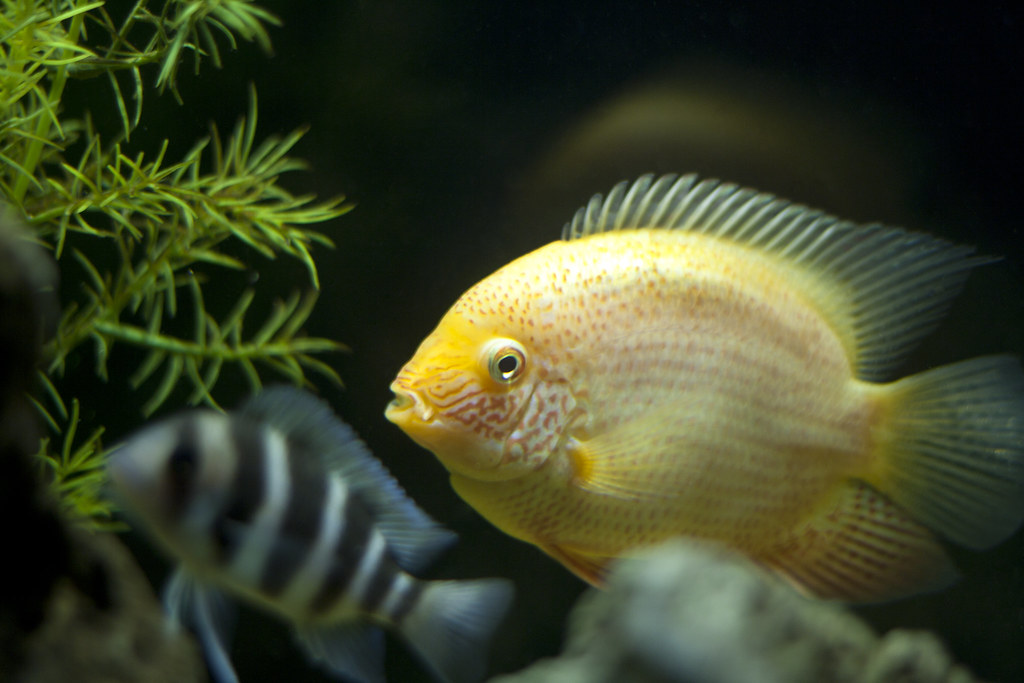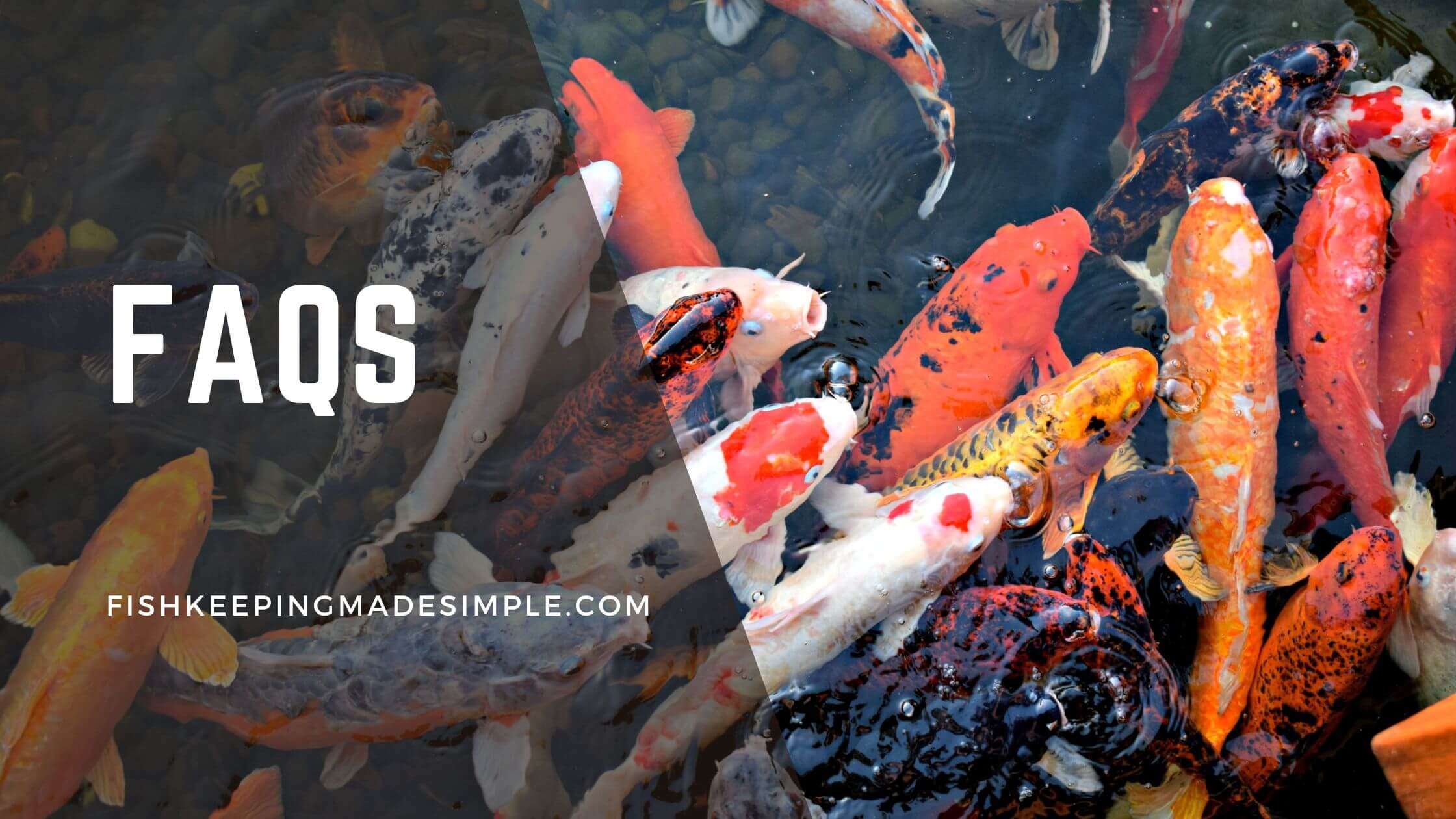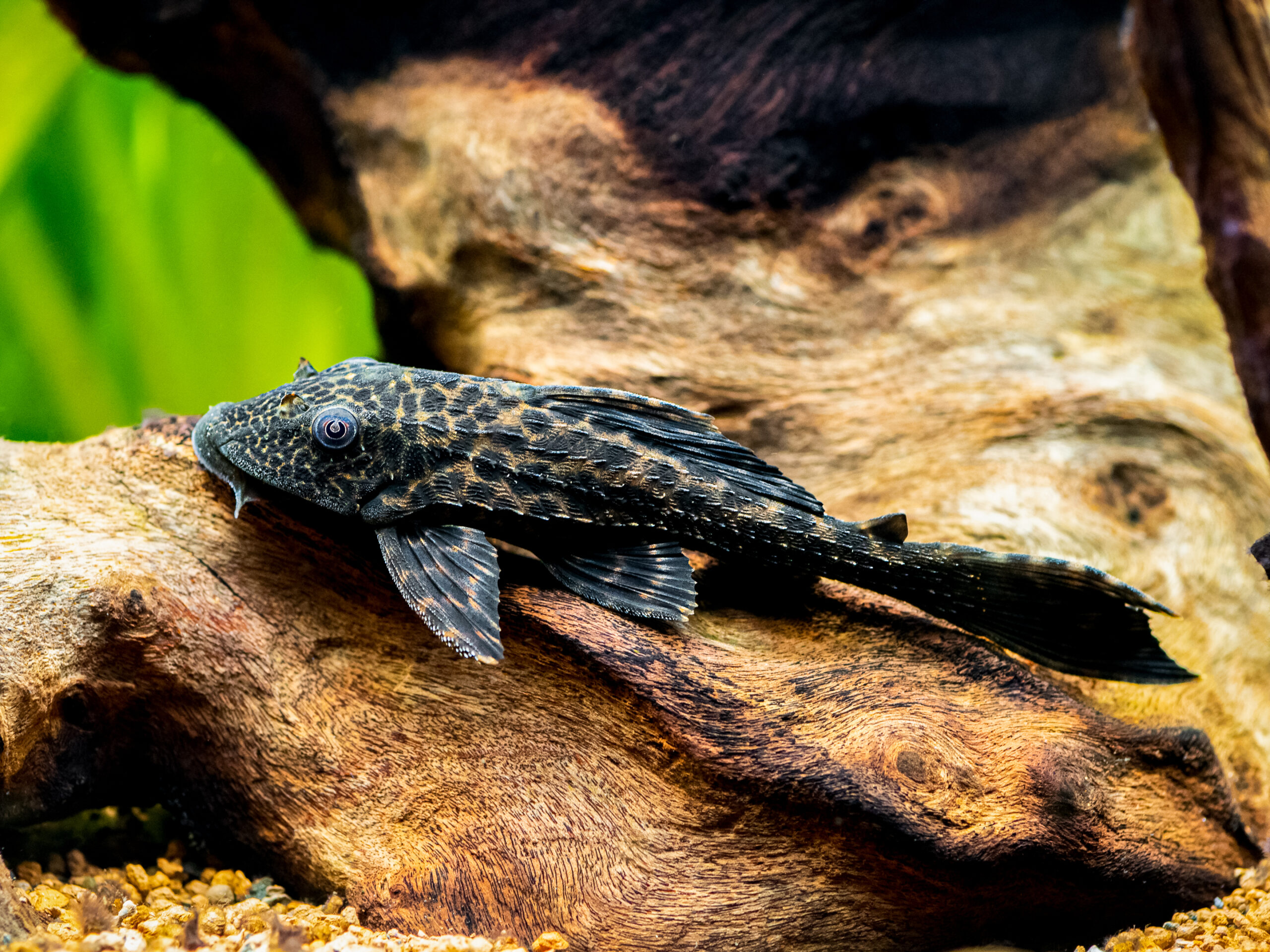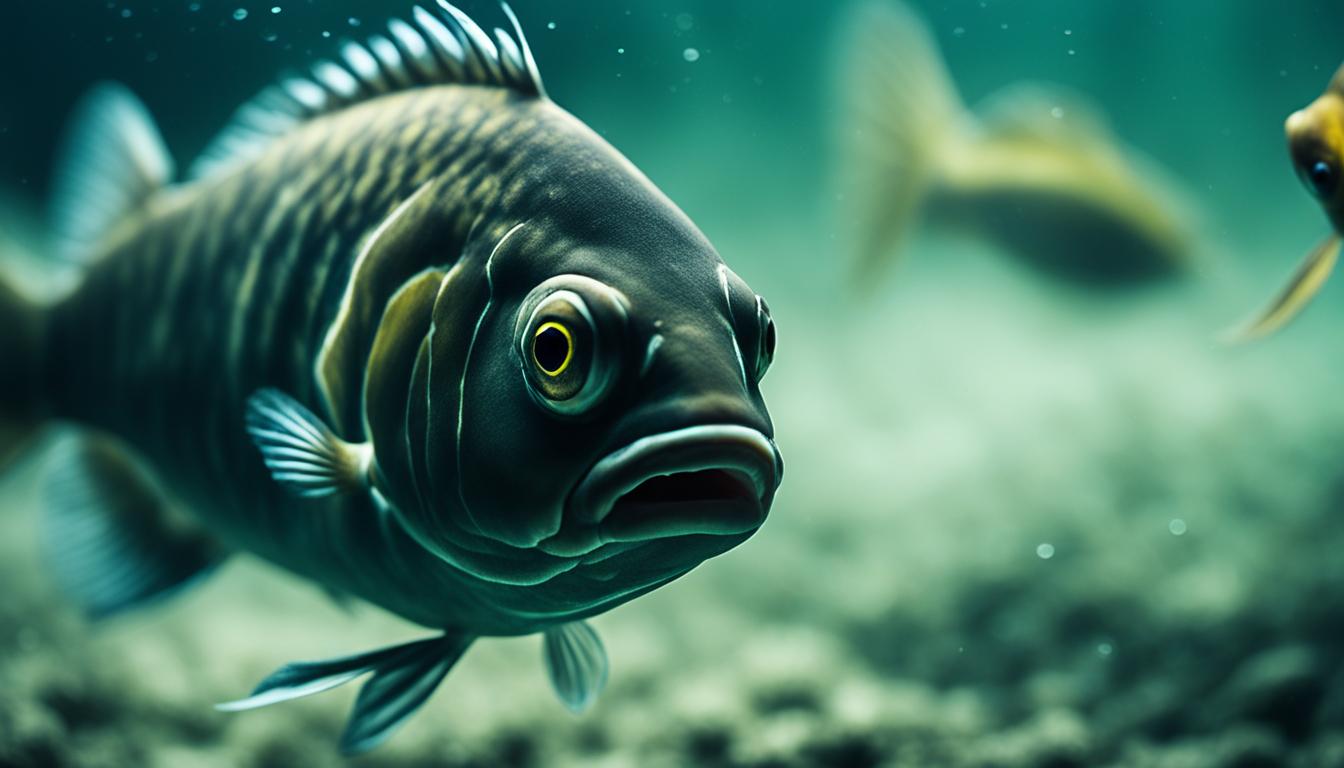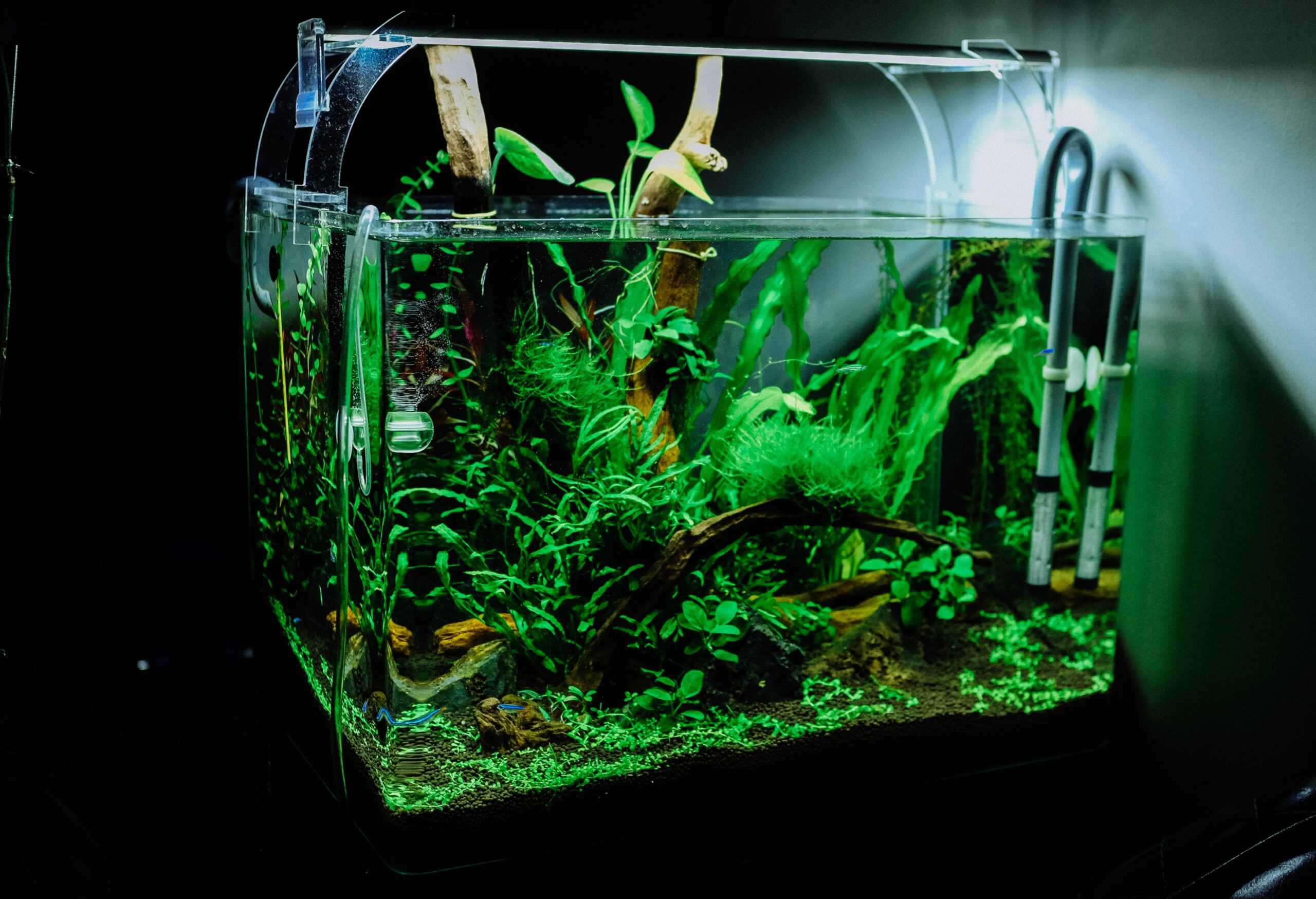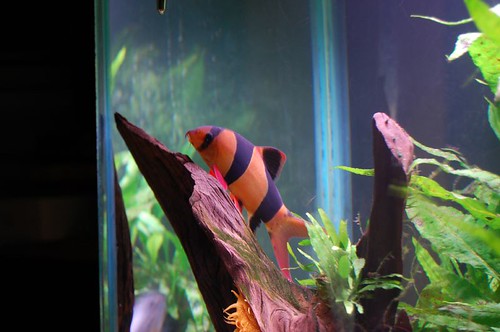Did you know that the Severum, also known as the Severum Cichlid, is one of the most sought-after fish for beginner aquarium enthusiasts? With its stunning colors and peaceful temperament, the Severum has captured the hearts of many fishkeepers. If you’re interested in creating a beautiful and thriving aquarium, this complete guide will provide you with all the essential information you need to know about caring for and maintaining a healthy Severum aquarium.
Table of Contents
Key Takeaways:
- Severum fish are popular among beginner aquarium enthusiasts.
- Caring for Severum fish requires providing a spacious tank and a balanced diet.
- Choosing compatible tank mates is crucial for the well-being of Severum fish.
- Breeding Severum fish can be a rewarding experience.
- A varied diet is essential for the growth and vibrant coloration of Severum fish.
Care Tips for Severum Fish
Proper care is essential for the well-being of your Severum fish. These captivating creatures require specific conditions to thrive in your aquarium. Paying attention to their needs will ensure their health and vibrant colors.
Spacious Tank with Hiding Spots
Severum fish are active swimmers and appreciate ample space to explore. A tank capacity of at least 55 gallons is recommended to accommodate their size and active nature. Create hiding spots using rocks, driftwood, or live plants to provide a sense of security for your Severum.
Balanced Diet for Optimal Nutrition
A well-rounded diet is crucial for the overall health of your Severum. Offer a variety of high-quality pellets, flakes, and freeze-dried foods formulated for cichlids. Additionally, include live or frozen foods like bloodworms, brine shrimp, and daphnia to satisfy their natural hunting instincts.
Maintain Water Quality and Temperature
Severum fish thrive in well-maintained water conditions. Aim for a pH level between 6.5 and 7.5 and a temperature range of 75°F to 82°F (24°C to 28°C). Regular water testing and consistent water changes are essential to prevent ammonia and nitrate buildup, ensuring a healthy environment for your Severum.
Choosing Tank Mates for Severum
When it comes to selecting tank mates for Severum fish, it’s crucial to choose compatible species that can coexist peacefully in the aquarium. Adding the right tank mates will not only provide a visually appealing display but also promote a harmonious and stress-free environment for your Severum. Avoid aggressive or territorial fish that may harm or stress the Severum, as they have a peaceful nature.
Good tank mates for Severum fish include angelfish, tetras, and other peaceful cichlids. These species share similar water parameters and temperaments, making them suitable companions for the Severum. Additionally, these tank mates typically occupy different levels of the aquarium, minimizing competition for space. The appearance and behavior of the chosen tank mates should complement the vibrant colors and unique qualities of the Severum, creating a visually captivating display within the tank.
The Best Tank Mates for Severum Fish
To assist you in making informed choices, here is a list of compatible tank mates for Severum fish:
| Tank Mate | Scientific Name | Compatibility |
|---|---|---|
| Angelfish | Pterophyllum scalare | Good |
| Tetras | Various species | Good |
| Peaceful Cichlids | Various species | Good |
Note: While these tank mates are generally compatible, it’s essential to consider the individual personalities and behaviors of each fish. Introduce new tank mates gradually and monitor their interactions closely to ensure a peaceful coexistence.
By carefully selecting tank mates for your Severum, you can create a harmonious and visually stunning aquarium that showcases the natural beauty of these regal fish. Remember to provide ample space, hiding spots, and a balanced diet to promote the well-being of all inhabitants in your serene aquatic community.
Breeding Severum Fish
Breeding Severum fish can be a rewarding experience for aquarists. These beautiful cichlids are known to be excellent parents, meticulously caring for their fry. To achieve successful Severum breeding, several key factors must be considered and carefully managed.
Creating the Right Breeding Conditions
Providing the optimal environment is crucial for encouraging Severum fish to breed. Start by ensuring the water parameters are suitable for breeding. Ideally, the water temperature should be maintained between **74°F to 82°F** (23°C and 28°C) and the pH level should be around **6.0 to 7.0**. A reliable heater and thermometer are essential for monitoring and regulating the temperature.
It’s crucial to establish a well-formed pair before breeding. Severum cichlids are known to form strong pair bonds, and it’s recommended to keep a group of juveniles together until they pair off. Observe their interactions closely, looking for signs of pairing, such as territorial behavior and courtship displays.
Providing Suitable Spawning Sites
Suitable spawning sites are vital for successful Severum breeding. These fish prefer to lay their eggs on flat rocks, ceramic caves, or even large leaves. Providing such appropriate spawning sites will encourage the pair to select and defend a suitable location for their fry.
Additionally, it’s crucial to create plenty of hiding spots within the aquarium. This will help the female feel secure and reduce the chances of the male becoming overly aggressive during the breeding process.
Ensuring Proper Nutrition
A well-balanced diet is essential for the health and reproductive success of Severum fish. Feeding them a nutritious diet consisting of quality pellets, live or frozen foods, and fresh vegetables will provide the necessary nutrients for breeding. Including protein-rich foods like bloodworms and brine shrimp can also stimulate breeding behavior in Severum fish.
It’s important to note that Severum parents will often not eat while caring for their fry. Providing them with an ample amount of high-quality food before and after breeding will ensure they have sufficient reserves to sustain themselves.
The Ideal Diet for Severum Fish

Proper nutrition is essential for the health and well-being of Severum fish. As omnivorous creatures, they require a varied diet that consists of both plant matter and protein-rich foods. Offering a diverse menu will not only satisfy their nutritional needs but also enhance their vibrant coloration and promote optimal growth.
Key Components of a Severum Diet
When planning the diet for your Severum fish, it’s important to include the following:
- High-quality pellets: Choose a reputable brand of pellets specifically formulated for cichlids. Look for options that contain a balanced blend of essential nutrients to support their overall health.
- Live or frozen foods: Supplement their diet with live or frozen foods such as bloodworms and brine shrimp. These protein-rich treats simulate their natural diet in the wild and provide important nutrients for their well-being.
- Vegetables: Don’t forget to incorporate vegetables into their diet. Severum fish enjoy nibbling on blanched spinach, zucchini, and peas. These veggies provide essential vitamins and fiber.
Feeding Frequency and Quantity
Severum fish should be fed two to three times a day, offering only what they can consume within a few minutes. Overfeeding can lead to obesity and water quality issues, so it’s important to provide an appropriate quantity of food.
Supplementary Vitamins and Minerals
Adding a high-quality vitamin and mineral supplement to their diet can help ensure that Severum fish receive all the necessary nutrients they need to thrive. Consult with an aquarium specialist or veterinarian for specific recommendations.
An Example Feeding Routine
Here is a sample feeding routine that can be followed:
| Time | Food |
|---|---|
| Morning | High-quality pellets |
| Afternoon | Vegetables (e.g., blanched spinach, zucchini) |
| Evening | Live or frozen foods (e.g., bloodworms, brine shrimp) |
It’s important to remember that each fish is unique, and their dietary needs may vary. Observing their behavior and adjusting the diet accordingly will help ensure their overall well-being.
Different Severum Species and Types
There are various Severum species and types available, each with their unique characteristics and color variations. These captivating fish offer aquarists a range of options to choose from, adding diversity and beauty to their aquariums.
Green Severum
The Green Severum (Heros severus) is one of the most popular species among Severum enthusiasts. With its vibrant green coloration, it adds a touch of elegance to any tank. These gentle yet curious fish thrive in a peaceful community setting, making them ideal for beginners.
Green Severums have a distinctive red patch that appears on their throat, adding a unique feature to their appearance. These fish can reach a size of up to 8 inches (20 cm), making them suitable for medium to large-sized aquariums.
Golden Severum
The Golden Severum (Heros efasciatus) is another stunning variety that aquarists adore. As the name suggests, these fish boast a beautiful golden hue, radiating warmth and vibrancy in the tank. Their striking color makes them a focal point of any aquarium.
Golden Severums have a similar temperament to Green Severums and can coexist peacefully with other peaceful fish species. They also grow to a size of 8 inches (20 cm) and require a spacious tank to accommodate their active nature.
When it comes to caring for both Green and Golden Severums, it’s essential to provide them with adequate space, hiding spots, and a balanced diet. Regular water changes and proper filtration are also crucial for maintaining their health and well-being.
Comparison of Green and Golden Severum
| Characteristics | Green Severum | Golden Severum |
|---|---|---|
| Coloration | Vibrant green with a red throat patch | Beautiful golden hue |
| Temperament | Peaceful and suitable for community tanks | Peaceful and suitable for community tanks |
| Size | Up to 8 inches (20 cm) | Up to 8 inches (20 cm) |
| Ideal Tank Size | Medium to large-sized aquarium | Medium to large-sized aquarium |
Adding either the Green or Golden Severum to your aquarium will not only enhance its visual appeal but also provide an opportunity to observe their fascinating behavior and interactions. These captivating fish are sought after for their unique colors and peaceful nature, making them a prized addition to any aquarist’s collection.
Common Severum Diseases and Prevention

Severum fish are generally hardy but can still be susceptible to certain diseases such as ich and fin rot. It is essential for aquarium owners to be aware of these common diseases and take appropriate measures to prevent their occurrence or spread within the tank.
One of the most common diseases that can affect severum fish is ich, also known as white spot disease. This parasitic infection manifests as small white spots on the fish’s body, fins, and gills. It can cause discomfort, itching, and respiratory distress in the affected fish. To prevent the onset of ich, it is important to maintain a clean and well-maintained aquarium. Regular water changes, proper filtration, and maintaining optimal water parameters help reduce the risk of ich infection.
Another common ailment that severum fish may experience is fin rot. Fin rot is a bacterial infection that primarily affects the fins and tails of the fish. It causes the fins to appear ragged, frayed, and discolored. To prevent fin rot, it is crucial to maintain good water quality by regularly testing the water parameters, such as ammonia and nitrate levels. Additionally, a balanced diet rich in essential nutrients and vitamins helps boost the fish’s immune system and enhances their resistance to bacterial infections.
When introducing new fish to the severum aquarium, it is essential to practice quarantine to prevent the spread of diseases. Quarantining new fish in a separate tank for a period of time allows for observation and ensures that any potential diseases or infections are detected and treated before exposing the entire tank population. This preventive measure helps minimize the risk of introducing pathogens or parasites to the established severum community.
By taking these preventive measures, such as maintaining cleanliness and optimal water conditions, and practicing quarantine when introducing new fish, aquarium owners can significantly reduce the risk of common severum diseases. A healthy and disease-free environment promotes the well-being and longevity of these beautiful and captivating fish.
Common Severum Diseases and Prevention Summary Table
| Disease | Symptoms | Prevention |
|---|---|---|
| Ich (White Spot Disease) | Small white spots on body, fins, and gills |
|
| Fin Rot | Ragged, frayed, and discolored fins |
|
| Quarantine | N/A |
|
Setting up the Perfect Severum Tank
Proper tank setup is crucial for the well-being of Severum fish. To create an ideal environment for your Severum, consider the following factors:
1. Tank Size and Space Requirements
Severum fish are known for their large size and active nature, so they need ample space to swim and explore. A tank with a minimum capacity of 55 gallons is recommended to accommodate their growth and comfortable movement.
**Severum tank setup** entails providing hiding spots in the form of driftwood, rock formations, and caves. These hiding spots not only create a more natural environment but also help reduce stress in your Severum fish. Ensure that the hiding spots are strategically placed to allow for swimming space as well.
2. Live Plants and Natural Décor
Adding live plants to your Severum tank not only enhances its aesthetic appeal but also provides various benefits. Live plants oxygenate the water, help maintain water quality, serve as natural filters, and provide shelter for your Severum fish. Consider adding plants like Amazon swords, Anubias, or Java ferns to create a lush and vibrant underwater habitat.
3. Substrate Selection
Choosing the right substrate is essential when setting up a tank for Severum fish. A fine and sandy substrate mimics their natural habitat, allowing them to dig and forage comfortably. Sand not only enhances the visual appeal of the tank but also prevents potential injuries caused by rough gravel.
4. Filtration and Water Changes
Adequate filtration is vital for maintaining optimal water conditions in a Severum tank. A canister filter or a hang-on-back filter is recommended to ensure efficient mechanical and biological filtration. Regular water changes of 20-25% every week help remove accumulated toxins, replenish essential minerals, and promote a healthy environment for your fish.
5. Water Parameters
Severum fish thrive in slightly acidic to neutral water with a pH range of 6.5 to 7.5. The water temperature should be maintained between 76°F and 82°F (24°C to 28°C) to replicate their native South American habitat.
6. Tank Mates
When choosing tank mates for your Severum, **severum tank setup** requires observing compatibility. Opt for peaceful and non-aggressive species that can coexist harmoniously with Severum fish. Consider angelfish, peaceful cichlids, tetras, or other community fish as suitable tank mates for a Severum tank.
By following these guidelines and providing a well-designed tank environment, you can ensure the health, happiness, and longevity of your Severum fish.
Conclusion
In conclusion, Severum is a beautiful and captivating fish that can thrive in a well-maintained aquarium. With proper care, diet, and suitable tank mates, you can enjoy the enchanting world of the Severum in your own home aquarium.
FAQ
What are some care tips for Severum fish?
Severum fish require a spacious tank with hiding spots, a balanced diet, and proper water quality and temperature.
What are some suitable tank mates for Severum fish?
Good tank mates for Severum fish include angelfish, tetras, and peaceful cichlids.
How can I successfully breed Severum fish?
Creating the right breeding conditions, providing suitable spawning sites, and ensuring proper nutrition are key factors for successful Severum breeding.
What should I feed Severum fish?
Severum fish are omnivorous and require a varied diet that includes high-quality pellets, live or frozen foods, and vegetables.
What are some different Severum species and types?
The most common types of Severum fish are the Green Severum and the Golden Severum, known for their striking appearance.
What are some common Severum diseases and how can I prevent them?
Common diseases in Severum fish include ich and fin rot. Maintaining a clean aquarium, monitoring water quality, and quarantining new fish can help prevent these diseases.
How do I set up the perfect tank for Severum fish?
Severum fish require a spacious tank with hiding spots, live plants, a sandy substrate, adequate filtration, and regular water changes.
How big do severums get?
Severum fish can grow up to 10 inches (25 cm) in length when fully mature. They are considered medium-sized cichlids and require an appropriately sized aquarium to accommodate their adult size.
Are severum fish aggressive?
Severums are generally considered peaceful and non-aggressive cichlids. They are known to be relatively calm and docile, especially when kept in a well-established, spacious aquarium with plenty of hiding spots and plants.
Can severums live with oscars?
Yes, severums and oscars can be kept together in the same aquarium, provided the tank is large enough (at least 75 gallons) and has ample hiding spots and plants. However, it’s important to monitor the interaction, as oscars can sometimes be territorial and aggressive towards other large cichlids.
Do severums eat plants?
Severums are omnivorous and may occasionally nibble on live aquarium plants, especially softer, more delicate varieties. However, they are not considered heavy plant eaters, and with a balanced diet, they are unlikely to cause significant damage to a planted aquarium.
How big do gold severums get?
Gold severums, a color variation of the standard severum, can grow up to 10 inches (25 cm) in length when fully mature, similar to the size of regular severums.
How fast do severums grow?
Severums are considered moderate growers, with a growth rate of approximately 1-2 inches (2.5-5 cm) per year, depending on factors such as water quality, diet, and tank size.
How long do severums live?
With proper care and a suitable environment, severum fish can live for 8 to 12 years in captivity.
How many severums in a 75 gallon tank?
As a general guideline, a 75-gallon aquarium can comfortably accommodate 2-3 adult severums, provided the tank is well-decorated with plants, driftwood, and hiding spots to reduce territorial behavior.
How often do severums lay eggs?
Severums are prolific breeders and can lay eggs every 4-6 weeks when conditions are favorable. However, it’s important to note that not all breeding attempts will result in successful fry development.
How to breed severum fish?
To breed severums, you’ll need to provide a spacious, well-decorated aquarium with soft, slightly acidic water, and a suitable breeding substrate. Pair up a male and female severum, and they will typically spawn and care for their eggs and fry on their own.
How to identify male and female severum fish?
Identifying the gender of severums can be challenging, as they do not exhibit pronounced sexual dimorphism. However, some general differences include the male’s slightly larger size, more pronounced forehead, and more vibrant coloration during breeding.
What fish can live with severums?
Severums are generally compatible with other peaceful, medium-sized cichlids and community fish, such as angelfish, discus, tetras, corydoras catfish, and plecos, provided the aquarium is large enough and has ample hiding spots.
Will severums eat small fish?
Severums are generally not aggressive towards smaller fish, but they may occasionally nip at or consume very small tankmates, especially if the smaller fish are perceived as a threat or food source. It’s essential to ensure the tank size and decor are appropriate to minimize such interactions.
How to breed severums?
The key to successfully breeding severums involves providing the right water parameters, a suitable breeding substrate, and a compatible male-female pair. Gradually acclimate the fish to the breeding conditions, and they will typically spawn and care for their eggs and fry on their own.
Are gold severums aggressive?
Gold severums, like their standard counterparts, are generally peaceful and non-aggressive cichlids. They are known to be relatively calm and docile, especially when kept in a well-established, spacious aquarium with plenty of hiding spots and plants.
Are golden severums mouthbrooders?
No, golden severums are not mouthbrooders. Severums, including the golden variety, are substrate spawners, meaning they lay their eggs on a flat surface, such as a rock or plant, and then care for the eggs and fry outside of their mouths.
Are green severums aggressive?
Green severums, similar to other severum varieties, are generally considered peaceful and non-aggressive cichlids. They are known to be relatively calm and docile, especially when kept in a well-established, spacious aquarium with ample hiding spots and plants.
Are severums compatible with angelfish?
Yes, severums and angelfish can be kept together in the same aquarium, provided the tank is large enough (at least 75 gallons) and has plenty of hiding spots and plants to reduce territorial behavior. However, it’s important to monitor the interaction, as angelfish can sometimes be aggressive towards other large cichlids.
Are severums a community fish?
Yes, severums are generally considered a community fish and can be kept with other peaceful, medium-sized cichlids and community fish, such as tetras, corydoras catfish, and plecos, in a well-established, spacious aquarium.
Are severums compatible with rainbow fish?
Severums and rainbow fish can be compatible tankmates, as long as the aquarium is large enough (at least 75 gallons) and has ample hiding spots and plants to reduce territorial behavior. However, it’s important to monitor the interaction, as some rainbow fish species may be more aggressive or nippy towards severums.
Are severums good parents?
Yes, severums are known to be excellent parents. They will fiercely defend their eggs and fry, and both the male and female will take turns guarding and caring for the young until they are able to fend for themselves.
Are severums nippers?
Severums are generally not considered nippers, but they may occasionally nip at other fish, especially if they feel threatened or if the tank is overcrowded. Providing a spacious, well-decorated aquarium can help minimize any nipping behavior.
Can a green and gold severum mate?
Yes, a green severum and a gold severum can successfully mate and produce offspring, as they are the same species with different color variations. The resulting fry may exhibit a mix of green and gold coloration.
Can a green severum be put with a flame cichlid?
It is generally not recommended to keep a green severum and a flame cichlid together in the same aquarium. Flame cichlids are known to be more aggressive and territorial, which could lead to conflicts and stress for the more peaceful severum.
Can discus and severums live together?
Discus and severums can potentially be kept together in the same aquarium, but it requires careful planning and consideration. Both species have specific water parameter requirements, and the tank size must be large enough (at least 100 gallons) to accommodate the needs of both fish.
Can golden severum cichlid mix with oscar?
Severums and oscars can be kept together, but it’s important to ensure the aquarium is large enough (at least 75 gallons) and has ample hiding spots and plants to reduce territorial behavior. Oscars are known to be more aggressive, so close monitoring is necessary to prevent any conflicts.
Can golden severum cichlid mix with small fish?
Severums, including the golden variety, can be compatible with smaller community fish, such as tetras, corydoras catfish, and plecos, provided the tank size is appropriate (at least 75 gallons) and there are plenty of hiding spots and plants to reduce the risk of the severum consuming or nipping at the smaller fish.
Can green and gold severums breed?
Yes, green severums and gold severums can successfully breed and produce offspring, as they are the same species with different color variations. The resulting fry may exhibit a mix of green and gold coloration.
Can high pH hurt severums?
Severums prefer slightly acidic to neutral water conditions, with a pH range of around 6.0 to 7.5. Maintaining a pH that is too high (above 8.0) can be stressful for severums and potentially lead to health issues over time.
Can severum live with African cichlids?
It is generally not recommended to keep severums and African cichlids together in the same aquarium. African cichlids, such as mbuna, are known to be more aggressive and territorial, which can lead to conflicts and stress for the more peaceful severums.
Can severum live with cichlids?
Severums can be compatible with other peaceful, medium-sized cichlids, such as angelfish, discus, and certain South American cichlid species, provided the aquarium is large enough (at least 75 gallons) and has ample hiding spots and plants to reduce territorial behavior.
Can severum live with parrot fish?
Severums and parrot cichlids can potentially be kept together, but it requires careful consideration and monitoring. Both species have specific water parameter requirements, and the tank size must be large enough (at least 75 gallons) to accommodate their needs and reduce the risk of conflicts.
Can severums and convicts live together?
Keeping severums and convict cichlids together in the same aquarium is generally not recommended. Convict cichlids are known to be highly territorial and aggressive, which can lead to conflicts and stress for the more peaceful severums.
Can you have 2 golden severum in a tank?
Yes, it is possible to keep two golden severums in the same aquarium, provided the tank is large enough (at least 75 gallons) and has ample hiding spots and plants to reduce territorial behavior. Monitoring the interaction between the two severums is important to ensure they coexist peacefully.
Do gold severums eat plants?
Like other severum varieties, gold severums are omnivorous and may occasionally nibble on live aquarium plants, especially softer, more delicate varieties. However, they are not considered heavy plant eaters, and with a balanced diet, they are unlikely to cause significant damage to a planted aquarium.
Do severums change gender?
Severums, like many other cichlid species, do not change gender naturally. They are gonochoristic, meaning they maintain their biological sex (male or female) throughout their lifespan.
How many severums are in a 125 gallon tank?
As a general guideline, a 125-gallon aquarium can comfortably accommodate 3-4 adult severums, provided the tank is well-decorated with plants, driftwood, and hiding spots to reduce territorial behavior.
How many severums in a 55 gallon tank?
A 55-gallon aquarium is generally too small to house adult severums comfortably. It is recommended to keep a maximum of 1-2 juvenile severums in a 55-gallon tank, and then upgrade to a larger aquarium as the fish grow.
How many severums in a 220 gallon tank?
A 220-gallon aquarium can provide ample space to house a small group of 4-6 adult severums, depending on the tank’s layout and decor. This larger tank size allows the severums to establish their own territories and reduces the risk of aggressive behavior.
How many severums in a 90 gallon tank?
A 90-gallon aquarium can comfortably accommodate 2-3 adult severums, provided the tank is well-decorated with plants, driftwood, and hiding spots to reduce territorial behavior.
How to keep severum fry from dying?
To help ensure the survival of severum fry, maintain excellent water quality, provide a suitable breeding substrate, and ensure the parents are well-fed and healthy. Gradually introduce the fry to a varied diet and avoid overcrowding the tank.
How to tell if severum eggs are fertilized?
Fertilized severum eggs will appear slightly opaque and develop an eye spot within a few days, while unfertilized eggs will remain clear and eventually turn white or fungus-covered.
How to tell the difference between male and female severums?
Identifying the gender of severums can be challenging, as they do not exhibit pronounced sexual dimorphism. However, some general differences include the male’s slightly larger size, more pronounced forehead, and more vibrant coloration during breeding.
What does ick look like on severum fish?
Ick, or white spot disease, appears as small, white, salt-like spots on the body, fins, and gills of severum fish. If left untreated, the infection can spread and become life-threatening.
What fish are compatible with severums?
Severums are generally compatible with other peaceful, medium-sized cichlids and community fish, such as angelfish, discus, tetras, corydoras catfish, and plecos, provided the aquarium is large enough and has ample hiding spots and plants.
What temperatures do severums like?
Severums prefer a water temperature range of 75-82°F (24-28°C). Maintaining a stable temperature within this range is important for their overall health and well-being.
What to feed hatched severum fry?
Newly hatched severum fry should be fed a diet of finely ground flakes, powdered fish food, or liquid fry food, gradually transitioning to larger pellets or frozen foods as they grow.
Will a severum eat angelfish?
Severums are generally not aggressive towards other fish, including angelfish, and are unlikely to actively hunt or consume them. However, there is a small risk that a severum may occasionally nip at or harass angelfish, especially if the tank is overcrowded or the severum feels threatened.
Will mbuna eat severum eggs?
Yes, it is possible for mbuna cichlids to consume severum eggs, as they are known to be egg predators. Keeping severums and mbuna together in the same aquarium is generally not recommended, as the aggressive nature of mbuna can be detrimental to the more peaceful severums.
Will severums eat tetras?
Severums are generally not aggressive towards smaller fish like tetras, but they may occasionally nip at or consume very small tetras if the tank is overcrowded or the severum perceives the tetras as a threat or food source. Providing a spacious aquarium with ample hiding spots can help minimize such interactions.
Will severums eat their babies?
Severums are known to be excellent parents and will fiercely defend their eggs and fry. However, in some cases, stressed or overcrowded severums may resort to cannibalism and consume their own offspring, especially if they feel the need to compete for resources.
Would severums eat endlers?
Severums are generally not aggressive towards smaller fish like endlers, but there is a risk that they may occasionally nip at or consume the endlers if the tank is overcrowded or the severum perceives the endlers as a threat or food source. Providing a spacious aquarium with ample hiding spots can help minimize such interactions.
Will severum kill small fish?
Severums are not typically aggressive towards smaller fish, but they may occasionally nip at or consume very small tankmates if the aquarium is overcrowded or the severum feels threatened. Providing a well-decorated, spacious tank can help reduce the risk of severums harming smaller fish.
References
I am a passionate aquarist with over 30 years of hands-on experience in fishkeeping. My journey began at a young age, collecting fish from the wild and learning through experimentation. Specializing in tropical fish, I bring a deep understanding of the hobby to FishKeepingMadeSimple. The site provides honest, detailed reviews of essential products and accessories to help fellow enthusiasts create the best environments for their fish.

